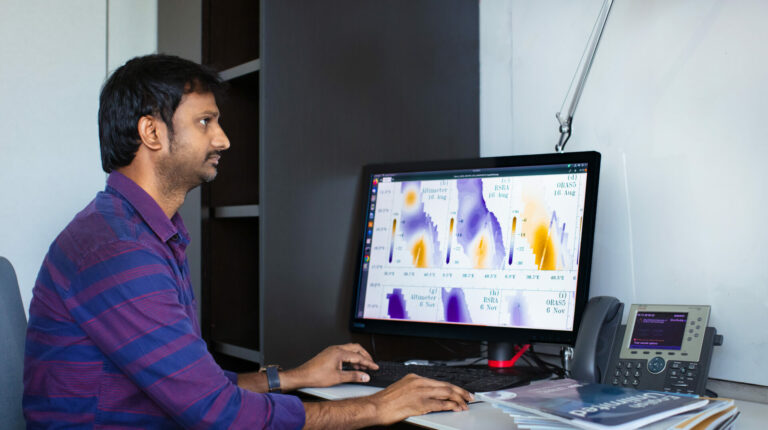Applied Mathematics and Computational Sciences
Focus on acoustic lenses
Carefully-designed meta-surfaces are used to build acoustic lenses that can transmit highly focused sound waves.


KAUST researchers have built two acoustic lenses using carefully designed meta-surfaces that can transmit highly-focused sound waves through water (left) and air (right).
© 2016 KAUST
Acoustic lenses can focus and manipulate sound waves and are useful in many applications, including biomedical imaging and surgery. However, fabricating lenses that can focus most of a sound wave without reflection is a real challenge. KAUST researchers have now used acoustic meta-surfaces to design two acoustic lenses that can transmit highly-focused sound waves in air and water1.
In the same way as a glass convex lens focuses light, an acoustic lens can focus sound waves. A key problem with this function is a factor known as acoustic impedance, or the resistance faced by a sound wave as it passes through a material. If the impedance of a lens matches that of its background—for example, the air surrounding it—then the transmission ability of the lens is far higher. In an impedance-matched lens, the transmitted sound wave is focused without reflection (or echoes) that could limit the lens’ performance.
The lenses developed by Rasha Al Jahdali and Ying Wu at from the University’s Computer, Electrical and Mathematical Science and Engineering Division are made from acoustic meta-surfaces. These are flat synthetic materials designed using building blocks smaller than the wavelength of the sound.
“There are not many naturally-occurring materials with the properties needed to build acoustic lenses,” said Wu. “Instead of fabricating a bulky convex lens, we used a series of thin, flat layers with different surface structures for use in water and air.”
The pair made the water lens from a thin steel plate interspersed with periodically arranged curled slits. They modeled the properties of the lens with different materials that could fill the slits to match the impedance of water while adjusting the dimensions of the slits to maximize the lens’ focusing ability. The researchers settled on isopentane to fill the slits and achieved promising results.
“We found that the majority of the incident wave energy hitting the new lens is focused over a large frequency range underwater,” noted Wu. “In air, however, the design needed to be different; the impedance of air is very low, so we used two gases, namely argon and xenon, in carefully-measured layered slits.”
By carefully choosing the thickness and sequence of the argon-xenon layers, the researchers were able to manipulate the path of the incident sound waves and bring them to a focus.
Wu and her colleague hope that their new lens designs could be used to redirect sound, cloak an object from sound and provide new non-destructive methods for imaging inside the body.
References
-
Al Jahdali, R. & Wu, Y. High transmission acoustic focusing by impedance-matched acoustic meta-surfaces. Applied Physics Letters 108, 031902 (2016).| article
You might also like

Applied Mathematics and Computational Sciences
Global look at sex differences in young people's mortality

Applied Mathematics and Computational Sciences
Going likelihood-free with neural networks

Applied Mathematics and Computational Sciences
A simple solution for frequency sharing

Applied Mathematics and Computational Sciences
Neural networks give deeper insights

Applied Mathematics and Computational Sciences
Staying online in the high-speed tube of the future

Applied Mathematics and Computational Sciences
Measuring the impact of desert greening

Applied Mathematics and Computational Sciences
Data-driven regional ocean models essential for planning

Applied Mathematics and Computational Sciences



